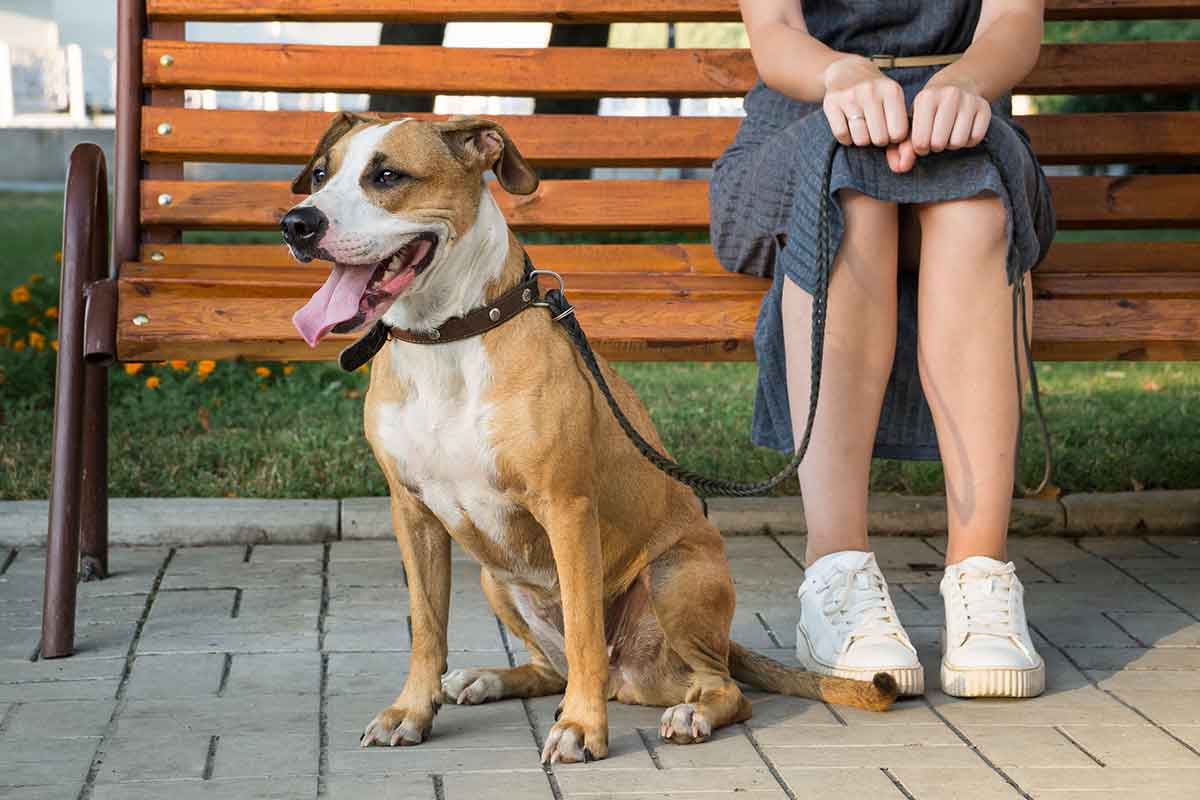Years ago, after living in the suburbs for a few years, I moved back to the city with my Golden Retriever, Oliver. Ollie was my demo dog, a working stiff who went along with me on my training jobs. I always left time between appointments for him to swim or run, and together we knew every pond, lake, and river, every park where he could run until his tongue was hanging out. This was the pattern of our days, alternating work and play. What would happen when we moved into the city? How would he feel? How would he cope?
To my utter surprise, Oliver loved the city. He adored all the smells, the fantastic number of other dogs, our late-night runs and, perhaps most of all, the deli on the next block where as soon as they saw him, they’d scoop all the meat from under the slicer and hand it to him. Life was good. He was a happy dog.
But not every dog responds to the city that way. Some need a little time and a little help to get them to see the joys of city living.
Suppose you, too, have moved from suburbia or you have adopted an adolescent or adult dog who stresses out over jackhammers — and who wouldn’t — or doesn’t like to ride on the elevator.
For the first issue — or any street-born problems — do two things. Remove your dog’s attention from the frightening stimulus by asking him to perform some of his favorite behaviors—spin, high five, shake, or speak. With his attention on doing fun things, he will momentarily forget the kid running by, the passing bus, the whatever. Give him a special treat or other favorite reward for being able to perform these behaviors with the distraction nearby. Good dog!
After he performs his tricks, or if he is too distracted to do them, give him a break by guiding him away and around the corner. Alternate between main streets and side streets, exposing him to a more and then less hectic environment. Is there a dog-friendly business nearby, a dry cleaner, hardware store, bank? Pop in to really get out of the noise. Ask your dog to sit. Give him a kiss, count three chimpanzees, head back out. Exposing him to noise a little at a time with quieter breaks in between will help him be braver today than he was yesterday.
Suppose your dog is afraid of the elevator, that strange little room that magically lets you out in a different place. No problem. Toss some fun into the mix. Ride one floor, ask your dog to sit in the elevator, and treat and praise him for doing so. As soon as you reach the ground floor, head outside the elevator and toss him a treat for his bravery. If there’s a pocket park nearby, perhaps you two can play a game of catch, your dog safely on leash if the park isn’t enclosed. After his walk, reverse the procedure. Have him sit for treats and praise on the way up and play his favorite game as soon as you get inside your apartment. Soon the elevator can become the trip to a good time instead of a place to be fearful.
In any environment, positive-reinforcement training helps a dog feel stress-free. When he knows a few cues, you have a way to communicate with him for his safety and your sanity, and it gives him the feeling that things are doable and familiar, that he can cope. When signs of fear or stress pop up, even a simple let’s go cue can help your dog feel like a can-do guy.
Knowing when your dog is feeling overwhelmed requires your attention. You might notice a tucked tail, ears pinned back, a hesitant walk. Find a quiet place to sit and take a break — most cities have parks of all sizes — and ask your dog to jump up on the bench with you, leaning against you. Petting him will help him release those good chemicals, and after a few minutes you’ll both be feeling much better.
Now it’s time for a little game. Hide a food treat right on the other side of the bench and ask him to find it or, if you’re in a really private or enclosed space and his recall is bulletproof, you can play a game of fetch or catch.
Life can be complicated, busy, and noisy in a city, and sometimes it can seem overwhelming. Happily, there are ways dogs and humans can help each other to feel good, as we always have done, since we first got together so long ago.
This article was reviewed/edited by board-certified veterinary behaviorist Dr. Kenneth Martin and/or veterinary technician specialist in behavior Debbie Martin, LVT.
Carol Lea Benjamin is a dog trainer and the author/illustrator of 28 books, most of them about dogs. She lives in New York City with her husband, Steve, and her Border Collie, Sky.








